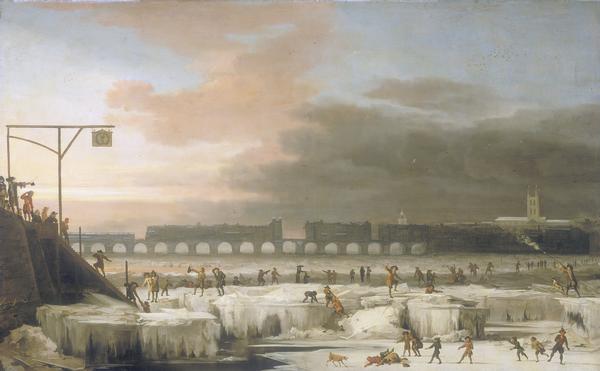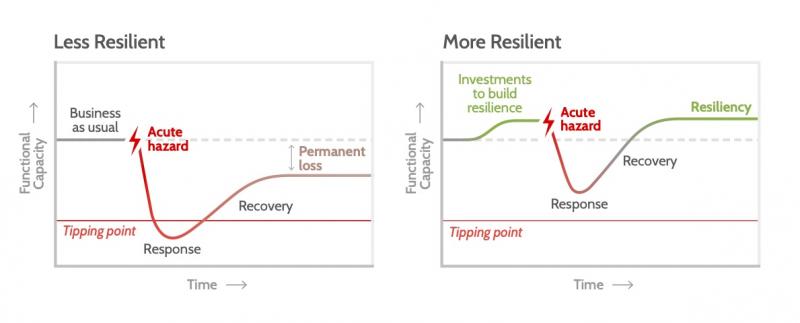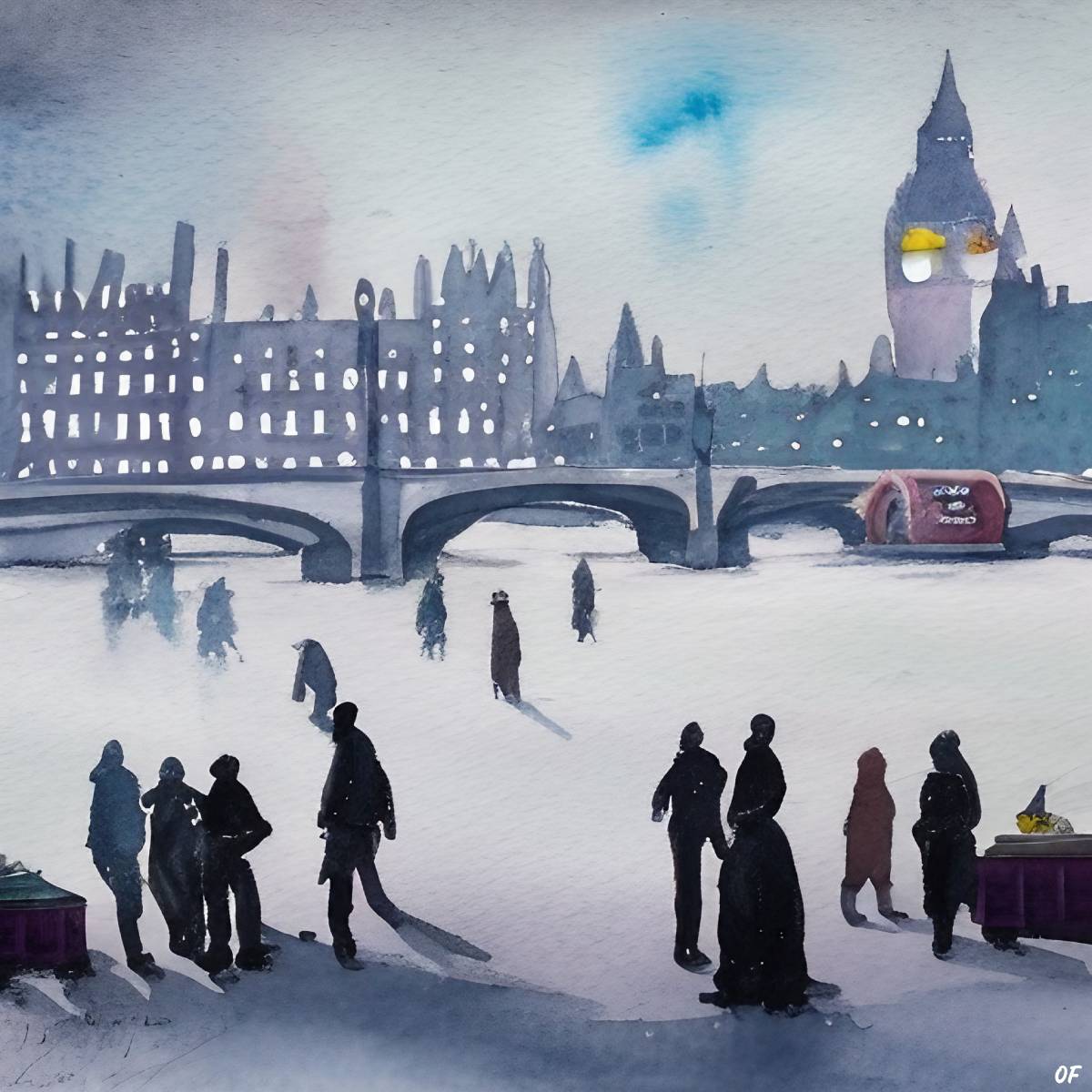Throughout its roughly 4.5 billion years of existence, the earth’s climate has been in a constant state of change, with tropical forests once occupying areas where we now have “permanent” ice caps and vice versa. Although humans have never experienced such dramatic changes in the relatively short time that we have inhabited the planet, constant change is still the norm. We have witnessed some life-altering variations in global temperatures and climatic conditions, the most recent of these being the prolonged cold period known as the Little Ice Age, which was experienced by the North Atlantic region shortly after the medieval warm period.
Although the cooler conditions experienced during the Little Ice Age period were not, technically, an ice age, records show that from around AD 1300 until well into the 18th century, temperatures were noticeably lower than those we now consider normal. In short, if you’d lived during this time, cold temperatures, and cold winters, heralded a new cold weather norm. Scientific evidence exists, in the form of the analysis of tree rings, which indicates the varying rates of growth throughout this period, and also through the examination of ice cores, which suggests a temperature drop of up to 3-4 degrees Fahrenheit (1-2 degrees Celsius) at its most extreme.
There is also much anecdotal evidence of the Little Ice Age to be found in letters, diary entries, and other records from that time, all of which suggest that temperatures began to fall around AD 1300, with an increasingly faster and sharper drop occurring around the middle of the 16th century, which continued for more than 100 years. The effects were particularly seen in the Northern Hemisphere and most severe around the North Atlantic Ocean and Northern Europe.
What caused the Little Ice Age?

It is difficult to determine what caused the onset of the Little Ice Age. Scientific opinion suggests a possible combination of several factors. There is some reason to believe that human activity may have played some part in causing this temperature decrease.
It has been suggested that the arrival of Europeans in the Americas, after Columbus, bringing with them diseases that devastated large numbers of the population—perhaps as many as 56 million, according to some reports—resulted in the reforestation of large areas of previously cultivated land and hence reduced levels of carbon dioxide, which led to a fall in temperatures.
Scientific literature suggests that this occurrence may have coincided with natural cyclical events connected with the earth’s rotation, reduced solar output, and volcanic activity, resulting in a noticeable global cooling effect. In his 2008 study “Volcanism and the Little Ice Age,” Thomas Crowley suggests that there were 16 explosive volcanic eruptions between 1630 and 1850—events which would, almost certainly, have resulted in clouds of ash that reduced the amount of solar radiation reaching the earth. And a study in 2012, led by the University of Colorado, further suggests that four massive volcanic eruptions occurred between 1275 and 1300, which they believe triggered the initial temperature drop that led to the Little Ice Age.
How did the Little Ice Age affect human activity?
Although the temperature drop was not great, the decreased temperatures lasted for an extended period. Many studies have suggested that its impact on human activity may have been greater than previously supposed.
You may have seen winter landscape pictures from this period and heard of the “frost fairs” that became a regular occurrence on rivers, such as the Thames, in London. It is also known that, in the winter of 1780, it was possible to walk from Manhattan to Staten Island across the frozen New York harbor, and there are reports of frozen birds falling from the sky. Rivers and other waterways throughout Northern Europe were regularly frozen at this time, and mountain glaciers advanced on villages. But there is evidence that there were many more serious and longer-lasting effects of the Little Ice Age.
The correlation between this period and occurrences of war and other societal crises is clear, even if the evidence of cause and effect is inconclusive. In 2007 and 2011, David Zhang of the University of Hong Kong published two studies that appear to confirm a causal link.
Many scientists, including Zhang, now believe that The Little Ice Age sparked the General Crisis in Europe—a period of great disruption in the 1600s. In these preindustrial times, many countries’ economies depended on agriculture, and poor crop yields can be clearly linked to economic and social problems. As Zhang says: “Temperature is not a direct cause of war and social disturbance. . . . The direct cause of war and social disturbance is the grain price. That is why we say climate change is the ultimate cause.”
In some areas, cooler temperatures and unusual weather events disrupted growing seasons and resulted in harvest failures, food shortages, and famine. Yongsong Huang and William J. D’Andrea suggest, in their 2011 study, that reduced temperatures in the 14th and 15th centuries may have led to the migration of the Norse Vikings from western Greenland due to the shortened growing season and their failure to adapt their agricultural practices. Increased sea ice may also have disrupted their seafaring routes. And although there were many factors that led to the fall of the Ming Dynasty in 1644, several sources suggest that crop failures and the resultant famines brought about by the cold air were major contributing causes.
However, as the old adage tells us, “necessity is the mother of invention,” and despite the upheaval and catastrophes that resulted from the Little Ice Age, the problems it caused also resulted in many positive outcomes for those who were able to adapt to the new conditions. In his 2018 book The Frigid Golden Age: Climate Change, the Little Ice Age, and the Dutch Republic, 1560–1720, Dagomar Degroot tells of how the Dutch economy boomed during this time, as a result of their resilience and ability to adapt. The changing climate, which first appeared as though it would decimate the Dutch whaling industry, sparked the introduction of new methods of processing whale blubber, which gave them an advantage over their competitors from other countries. In addition, failing crops in Europe provoked Dutch traders to explore new, more distant opportunities and led to the formation of enterprises such as the Dutch East India Company. The changing patterns of ocean currents and prevailing winds, which resulted from the lower temperatures, helped to facilitate this exploration. Many indigenous communities throughout North America also thrived by adapting their agricultural practices and societal organization to benefit from the Little Ice Age.
Surviving the future by learning from the past
So while it is clear that humans have survived climate change in the past, as average global temperatures continue to rise, we must be prepared to adapt to changing environmental conditions.
Although we know that the planet undergoes natural warming and cooling cycles, many scientific studies suggest that the current rate of warming is related to human activity. But there are measures we can take to limit both the rate of temperature increase and its impact on our lives. If we don’t adapt, many will not survive.
Climate models have attempted to predict how rising average temperatures may affect different regions of the planet. All indications are that, unlike the effects of the Little Ice Age, the impact of these changes will be felt globally and not just in Northern Europe.
Global warming does not just mean everywhere will get nice and warm—an increase in average global temperatures means melting ice sheets at the poles, leading to rises in sea levels in the arctic ocean and beyond; it means changes in ocean currents and prevailing wind patterns, which affect weather patterns and increase the likelihood of storms and other extreme weather events. In short, it means all of the earth’s large-scale atmospheric systems can no longer be relied on to support us as they have before.
It is likely that we may no longer be able to cultivate certain crops successfully in the regions where they are currently grown and that other areas may prove to be more suitable—an impact that could mean great shifts in the whole balance of economic power in the world.
Desertification of some areas and flooding of others may lead to global problems of food insecurity and localized famine, disease, war, and mass migrations of people.
The US Government has produced a Climate Resilience Toolkit, which suggests actions that communities can take to evaluate the risks and reduce the impact of these changes.
It defines resilience as “the ability of a system to recover from or adjust to misfortune or change”

Although the greatest innovations are often born of necessity, these graphs illustrate the improved outcome of proactively planning for the future, compared with reacting to events and problems as they happen.
We are luckier than those who experienced the Little Ice Age. We have the advantage of being forewarned, having better communication, and having better infrastructure; we have more advanced technology, and we know from their experience that adaptation and innovation are the keys to surviving the challenges we face.


